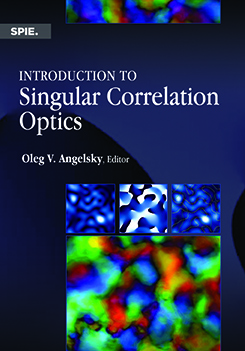|
Singular optics is among the actively developing and promising areas of modern photonics whose numerous and diverse applications—ranging from microscopy to astrophysics—emerged at the beginning of the third millennium. Originating from the depth-of-wave concept, singular optics was initially developed within the coherent approximation. Namely, its origins mainly focused on phase singularities (phase indeterminicity) of the complex amplitude of a completely coherent, monochromatic field aexp(iw). These phase singularities are associated with the field elements (points, lines, and surfaces) where the field amplitude equals zero. The structure-forming role of the set of such elements (i.e., the singular skeleton) is of great importance, as is the set of polarization singularities of EM fields with inhomogeneous polarization, such as the elements where the azimuth of polarization or the angle of ellipticity is indeterminate. The location and characteristics of phase singularities (referred to also as amplitude zeros) together with the corresponding sign principles governing formation of the nets of singularities as holistic systems provide the basis for understanding important regularities of the field formation and lay the foundation for key applications of the singular-optics approach. The current developments in singular optics are characterized by an extension of the general approach, i.e., recognition and investigation of phase singularities of light fields described by complex parameters: the fields are not completely coherent in time and space, and are not completely polarized. This extension is important from a fundamental standpoint, as it leads to elaboration of the more-realistic case of partially coherent fields. Here, we can apply the fruitful concept of ‘optics of observable quantities, which reduces all quantities figuring in the theory to the measured parameters of a field following clear and well-substantiated experimental algorithms. On the other hand, from a practical standpoint, incompletely coherent optical fields, which are sometimes unavoidable, ensure some known advantages. These advantages fostered the development of singular optics approaches and techniques used in super-resolving fluorescent microscopy, coronagraphy, optical communications in inhomogeneous media, and some versions of singular-optical tweezers, among other applications. The mentioned tendency for light fields to be incompletely coherent substantiates the establishment of a distinct domain of singular optics called correlation singular optics, i.e., singular optics of partially coherent, partially polarized, and polychromating light fields, taking into account the definition of correlation optics introduced in the 2007 SPIE Press monograph Optical Correlation Techniques and Applications. As is seen it the title, Introduction to Singular Correlation Optics, this new book is devoted solely to the domain of singular optics. Considerable attention has recently been paid to both the fundamentals and the applications of singular optics, including the correlation optics domain of this R&D area. The majority of relevant monographs and reviews deal with the theoretical aspects of singular optics approaches, while experimental techniques intrinsic to this field are disseminated among numerous special papers. A distinct feature of this book lies in the authors’ endeavors to collect at least some original experimental approaches that will be instructive for understanding and mastering the topic. Taking into account the rapidly increasing maturity of the area of interest, one can expect that the information represented in the book (being an introduction to the topic rather than a summary of its current developments) will be applicable and relevant into the foreseeable future. The book will certainly be a useful complement to modern theoretical textbooks on the subject. Finally, I would like to thank one of the authors of this monograph, Prof. Peter Polyanskii, who irrevocably left us a few weeks before the publication of this monograph. Prof. Polyanskii was a leader in the field of modern optics who has gained world recognition for his scientific achievements. His research efforts in holographic associative memory, the conception of edge diffraction of Jung–Rubinovich, and singular optics of partially coherent and partially polarized polychromatic optical fields are well known and repeatedly evaluated by different global scientific organizations. The importance of Prof. Polyanskii’s scientific results in optics is invaluable to each of us.
|



